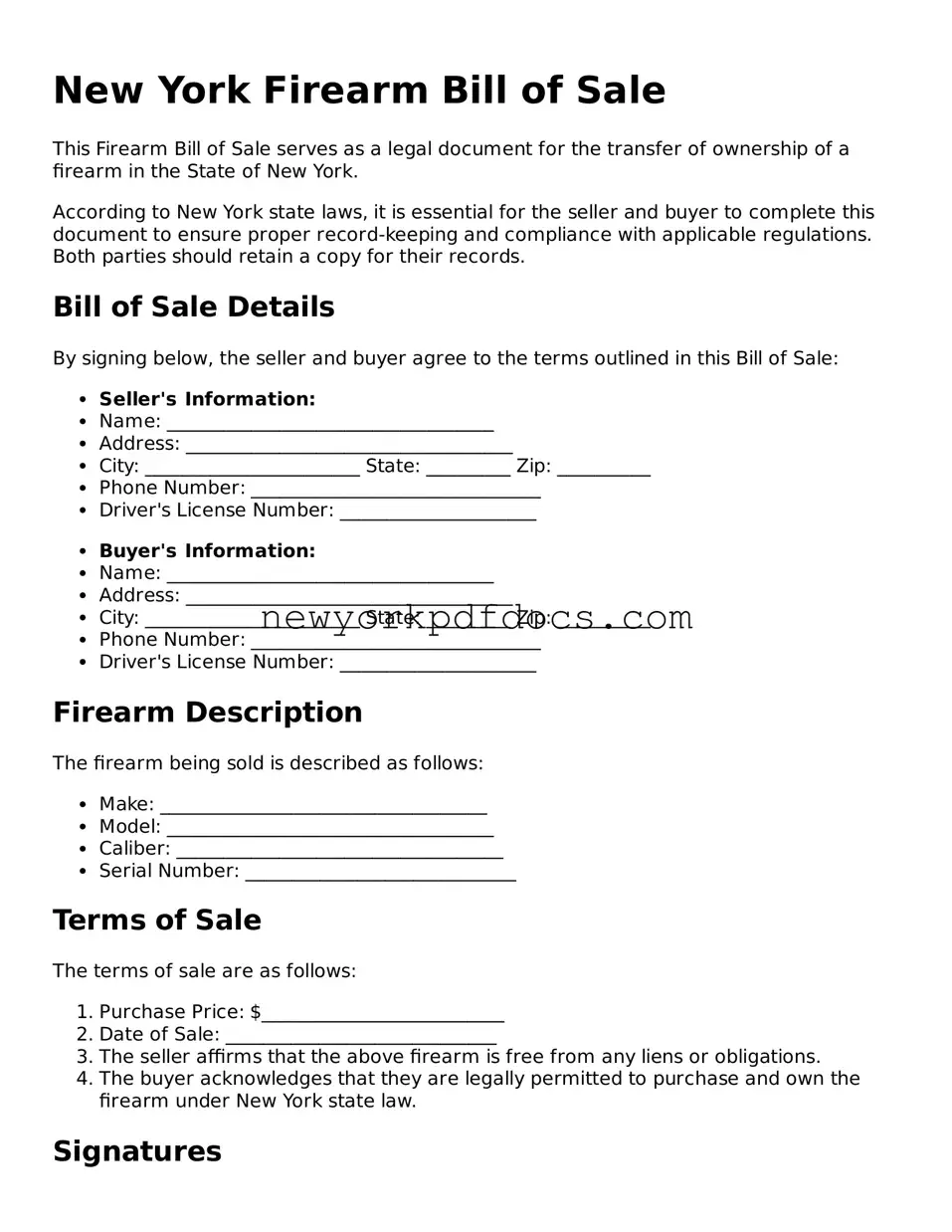New York Firearm Bill of Sale
This Firearm Bill of Sale serves as a legal document for the transfer of ownership of a firearm in the State of New York.
According to New York state laws, it is essential for the seller and buyer to complete this document to ensure proper record-keeping and compliance with applicable regulations. Both parties should retain a copy for their records.
Bill of Sale Details
By signing below, the seller and buyer agree to the terms outlined in this Bill of Sale:
- Seller's Information:
- Name: ___________________________________
- Address: ___________________________________
- City: _______________________ State: _________ Zip: __________
- Phone Number: _______________________________
- Driver's License Number: _____________________
- Buyer's Information:
- Name: ___________________________________
- Address: ___________________________________
- City: _______________________ State: _________ Zip: __________
- Phone Number: _______________________________
- Driver's License Number: _____________________
Firearm Description
The firearm being sold is described as follows:
- Make: ___________________________________
- Model: ___________________________________
- Caliber: ___________________________________
- Serial Number: _____________________________
Terms of Sale
The terms of sale are as follows:
- Purchase Price: $__________________________
- Date of Sale: _____________________________
- The seller affirms that the above firearm is free from any liens or obligations.
- The buyer acknowledges that they are legally permitted to purchase and own the firearm under New York state law.
Signatures
By signing below, both the seller and buyer agree to the terms and conditions outlined in this Bill of Sale:
Signature of Seller: ___________________________ Date: ______________
Signature of Buyer: ___________________________ Date: ______________
This document is governed by the laws of the State of New York. By signing, both parties confirm their understanding and acceptance of its terms.
